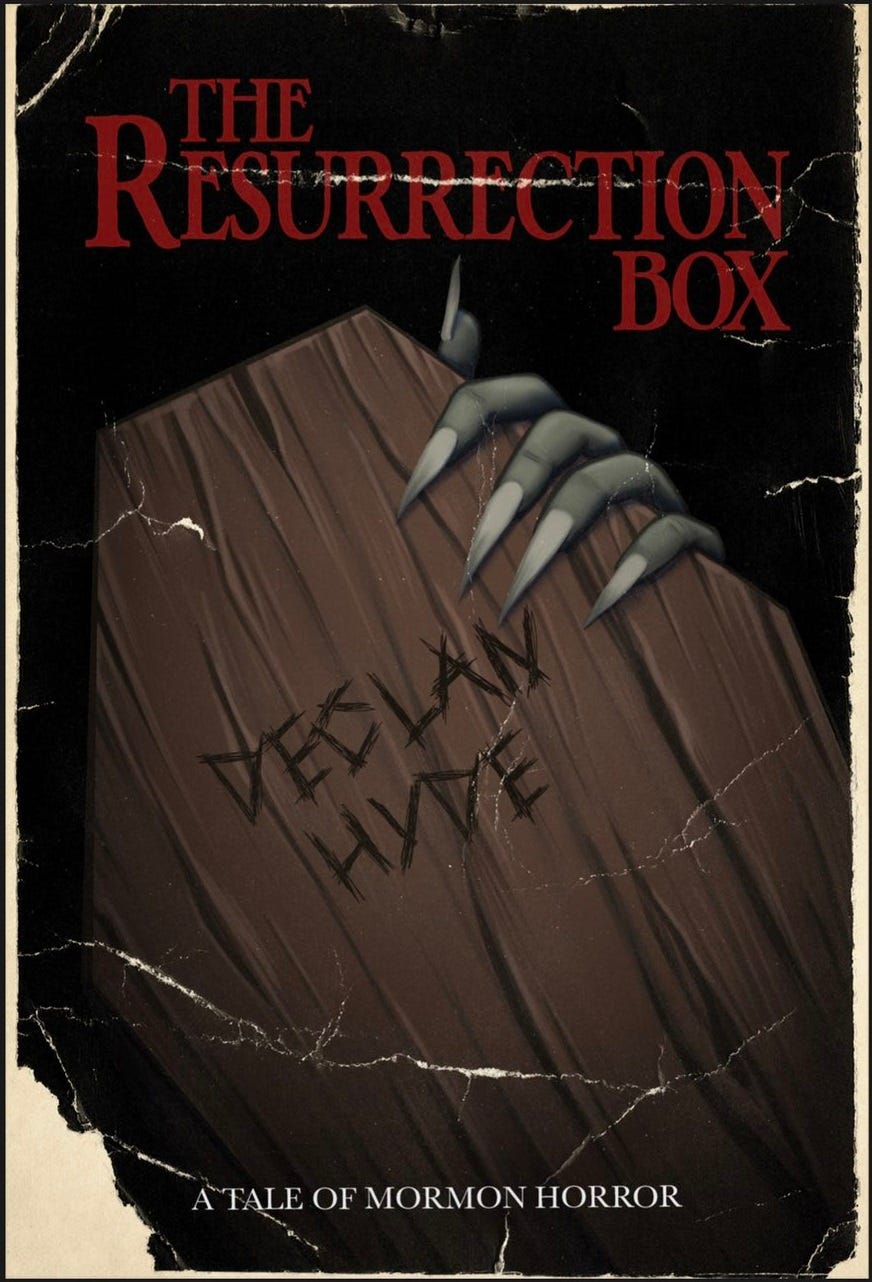Book Review: The Resurrection Box
When I was at BYU, I had a friend who worked at the folklore archive in the library. She would tell me all about the obscure legends that she read about each week. Some were new to me, but others were the familiar tales that I heard from other missionaries during the time I wore the black and white name tag in Eastern Europe: stories of angelic protectors, demonic armies, and men blessed or cursed to live for millennia. These stories often gave me chills as they represented the crossing over of the often inaccessible world of scripture with the world I experience. Reading The Resurrection Box: A Tale of Mormon Horror by Declan Hyde recalled to me those types of stories, packaged in an engaging fiction narrative.
The Resurrection Box takes place in 1850s Utah and primarily follows Zina, a young woman whose family converted to Mormonism in England when she was a child. We first encounter her as she mourns the death of her only child with her polygamous husband. A heavenly messenger informs her of a miraculous coffin at a remote cabin that can return her son to life if she finds it. Her guide on the quest is Bill Pratchett, a trapper and lapsed Mormon with a troubled past. Together they race against Clyde Jones, who was wronged by the Mormons in Missouri and has his own plans for the coffin.
Clocking in at 140 pages, the novella is fast paced and reminiscent of the Westerns of Louis Lamour. The characters are interesting and don’t wear out their welcome. No mere MacGuffin, the titular coffin plays an important role in revealing who’s on the Lord’s errand and who’s on the devil’s while also being the means of introducing the supernatural horror in the story.
The ebook is much better polished than many self-published stories, relatively free from typos and formatting errors. My biggest complaint is a handful of anachronistic asides coming from the narrator that were unnecessary and distracted from the narrative. The novella is probably best appreciated by members of the Church of Jesus Christ of Latter-day Saints, but enough context and explanation are provided to make it more broadly accessible.
Overall, the book was enjoyable, and I’ll be looking out for Declan Hyde’s next offering.




